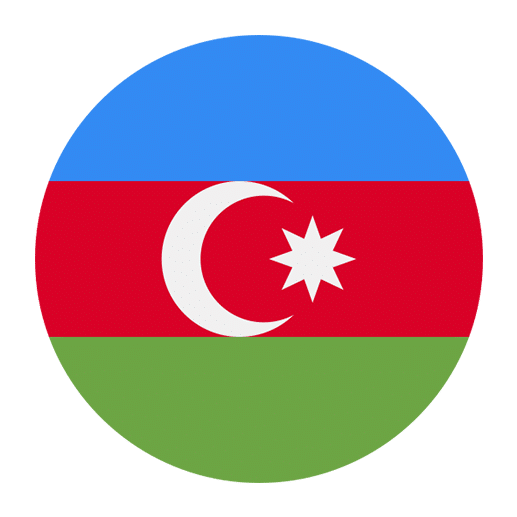The Azerbaijani language, a member of the Turkic language family, offers a rich tapestry of linguistic structures and fascinating grammatical elements. One of the key aspects of mastering any language is understanding how to compare things, whether it be people, objects, or experiences. This article will delve into the comparative and superlative forms of Azerbaijani adjectives, providing a comprehensive guide for English speakers interested in advancing their Azerbaijani language skills.
Understanding Adjectives in Azerbaijani
Before we dive into the comparative and superlative forms, it’s essential to grasp the basic function of adjectives in Azerbaijani. Like in English, adjectives in Azerbaijani describe or modify nouns. They provide more information about an object’s size, shape, age, color, and many other qualities.
For example:
– böyük (big)
– kiçik (small)
– gözəl (beautiful)
– qoca (old)
– yeni (new)
Comparative Forms
The comparative form is used to compare two entities, indicating that one possesses a higher or lower degree of a particular quality than the other. In Azerbaijani, forming the comparative of adjectives is relatively straightforward. The primary method involves adding the suffix “-dək” or “-dəkdir” to the adjective.
Forming Comparatives:
1. **Positive Adjective:** böyük (big)
2. **Comparative Adjective:** böyü+dək (bigger)
Examples:
– Bu ev o evdən böyü+dəkdir. (This house is bigger than that house.)
– O, mənim qardaşımdan kiçik+dəkdir. (He is smaller than my brother.)
**Note:** The suffix “-dək” can sometimes be shortened to “-dək” in colloquial speech, but for clarity, it’s best to use the full form in writing.
Comparative with “daha”
Another common way to form comparatives is by using the word “daha” before the adjective. This method is quite similar to using “more” in English.
Examples:
– Bu kitab daha maraqlıdır. (This book is more interesting.)
– O, daha ağıllıdır. (He is smarter.)
Using “daha” can sometimes add a nuance of emphasis, making the comparison sound stronger.
Superlative Forms
The superlative form is used to indicate that one entity possesses the highest or lowest degree of a particular quality among three or more entities. In Azerbaijani, the superlative form is typically created by adding the prefix “ən” to the adjective.
Forming Superlatives:
1. **Positive Adjective:** böyük (big)
2. **Superlative Adjective:** ən böyük (biggest)
Examples:
– Bu, ən böyük evdir. (This is the biggest house.)
– O, ən gözəl qızdır. (She is the most beautiful girl.)
**Note:** The prefix “ən” remains constant regardless of the adjective, making it a straightforward way to form superlatives.
Superlative with “ən çox” and “ən az”
For adjectives that do not easily lend themselves to the “ən” prefix, or for added emphasis, you can use “ən çox” (the most) or “ən az” (the least).
Examples:
– Bu, ən çox maraqlıdır. (This is the most interesting.)
– O, ən az ağıllıdır. (He is the least smart.)
Irregular Comparatives and Superlatives
Just like in English, Azerbaijani has a few adjectives with irregular comparative and superlative forms. These are often adjectives that are very common or very old in the language.
Examples:
– yaxşı (good)
– Comparative: daha yaxşı (better)
– Superlative: ən yaxşı (best)
– pis (bad)
– Comparative: daha pis (worse)
– Superlative: ən pis (worst)
– çox (many/much)
– Comparative: daha çox (more)
– Superlative: ən çox (most)
– az (few/little)
– Comparative: daha az (less)
– Superlative: ən az (least)
Practical Application and Exercises
To solidify your understanding of comparative and superlative forms in Azerbaijani, it is crucial to practice. Here are a few exercises you can try:
Exercise 1: Forming Comparatives
Convert the following adjectives into their comparative forms:
1. balaca (small)
2. yüksək (high)
3. bahalı (expensive)
4. sürətli (fast)
Answers:
1. balaca+dək (smaller)
2. yüksək+dək (higher)
3. bahalı+dək (more expensive)
4. sürətli+dək (faster)
Exercise 2: Forming Superlatives
Convert the following adjectives into their superlative forms:
1. geniş (wide)
2. parlaq (bright)
3. ucuz (cheap)
4. sürətli (fast)
Answers:
1. ən geniş (widest)
2. ən parlaq (brightest)
3. ən ucuz (cheapest)
4. ən sürətli (fastest)
Exercise 3: Sentences with Comparatives and Superlatives
Create sentences using the comparative and superlative forms of the adjectives provided:
1. gözəl (beautiful)
2. güclü (strong)
3. maraqlı (interesting)
4. sürətli (fast)
Examples:
1. Comparative: Bu bağ o bağdan gözəl+dəkdir. (This garden is more beautiful than that garden.)
Superlative: Bu, ən gözəl bağdır. (This is the most beautiful garden.)
2. Comparative: O, mənim qardaşımdan güclü+dəkdir. (He is stronger than my brother.)
Superlative: O, ən güclü oğlandır. (He is the strongest boy.)
3. Comparative: Bu film daha maraqlıdır. (This movie is more interesting.)
Superlative: Bu, ən maraqlı filmdir. (This is the most interesting movie.)
4. Comparative: Bu maşın daha sürətlidir. (This car is faster.)
Superlative: Bu, ən sürətli maşındır. (This is the fastest car.)
Common Mistakes and Tips
When learning comparative and superlative forms in Azerbaijani, there are a few common mistakes that learners often make. Being aware of these can help you avoid them:
1. **Overuse of “daha” and “ən”:** While “daha” and “ən” are helpful, relying too heavily on them can make your speech sound repetitive. Try to mix in the suffix “-dək” for variety.
2. **Incorrect Suffix Usage:** Ensure that you are using the correct suffixes for comparatives (“-dək”) and the correct prefixes for superlatives (“ən”). Mixing them up can lead to confusion.
3. **Ignoring Irregular Forms:** Some adjectives have irregular comparative and superlative forms that do not follow the standard rules. Make sure to memorize these exceptions.
Tips for Mastery:
1. **Practice Regularly:** Use the comparative and superlative forms in your daily conversations to get comfortable with them.
2. **Listen and Learn:** Pay attention to how native speakers use these forms in conversations, media, and literature.
3. **Use Flashcards:** Create flashcards with adjectives and their comparative and superlative forms to reinforce your memory.
4. **Engage in Language Exchange:** Practicing with a native speaker can provide real-time feedback and help you improve more quickly.
Conclusion
Mastering the comparative and superlative forms of adjectives in Azerbaijani is a significant step towards achieving fluency. By understanding the rules and practicing regularly, you can effectively compare and describe the world around you in Azerbaijani. Remember, language learning is a journey, and each step brings you closer to your goal. Happy learning!

